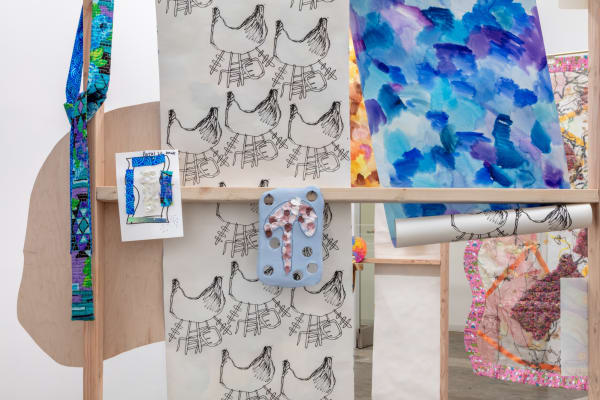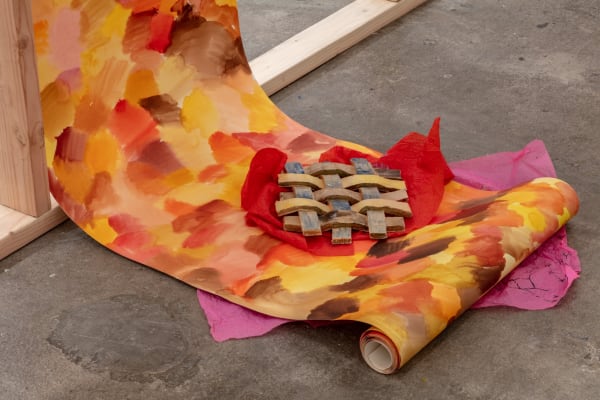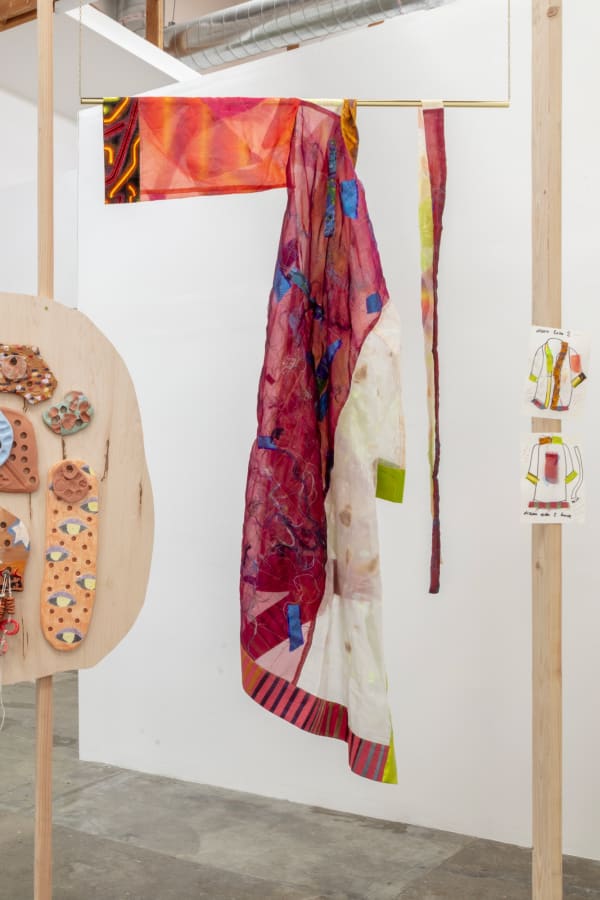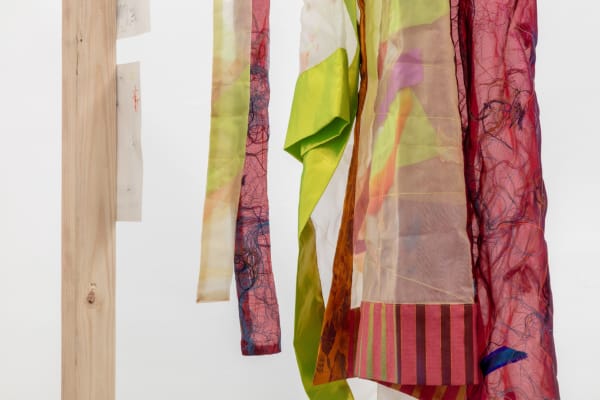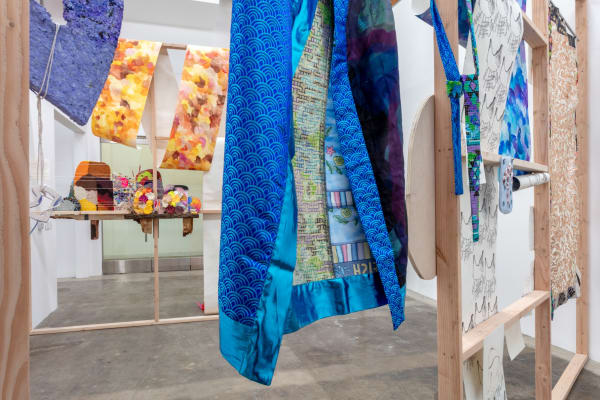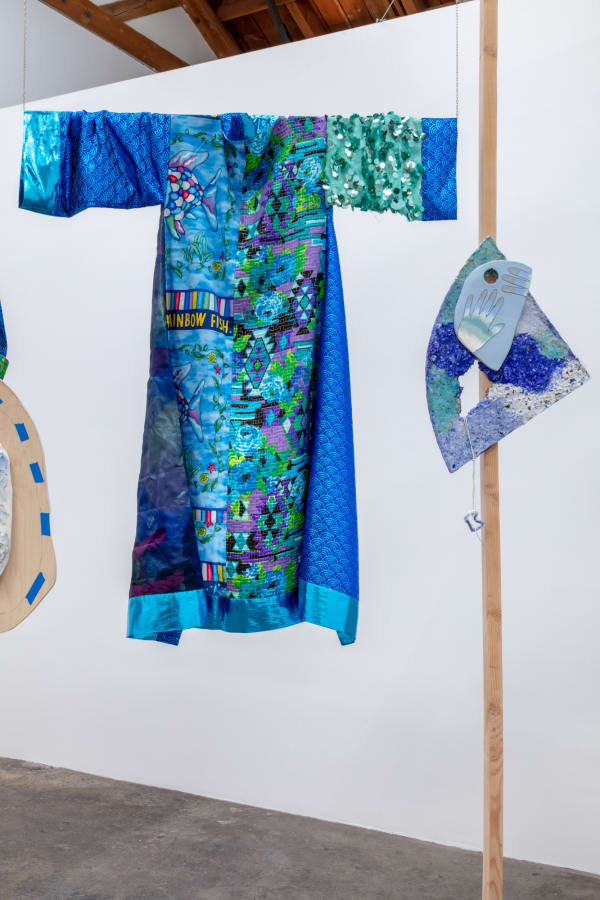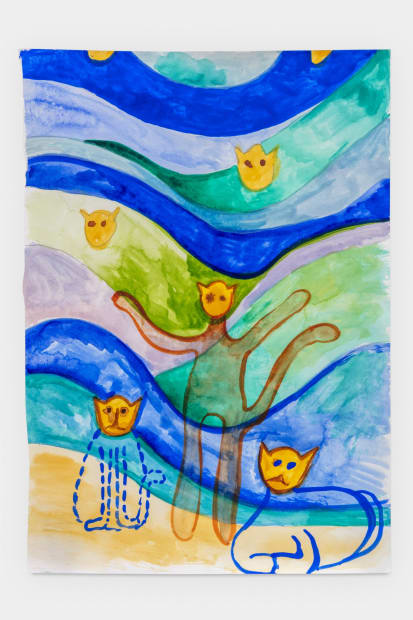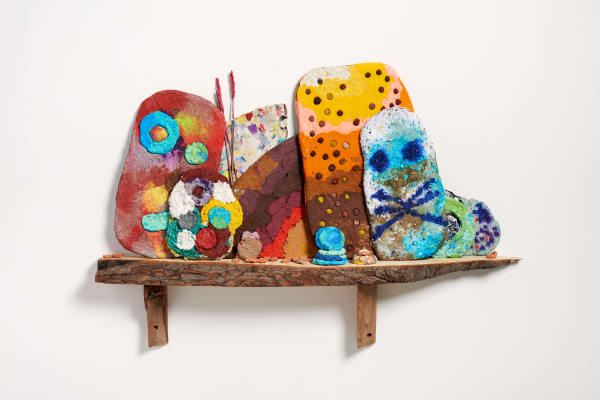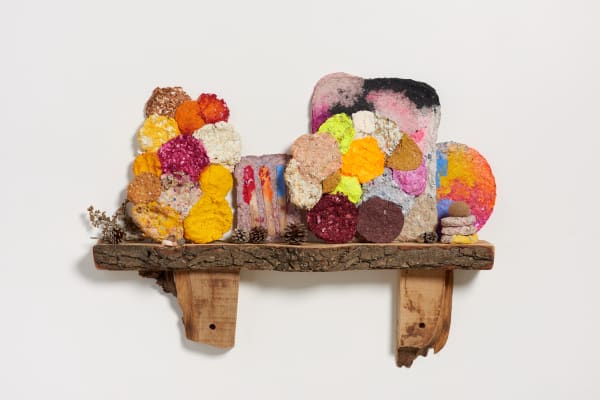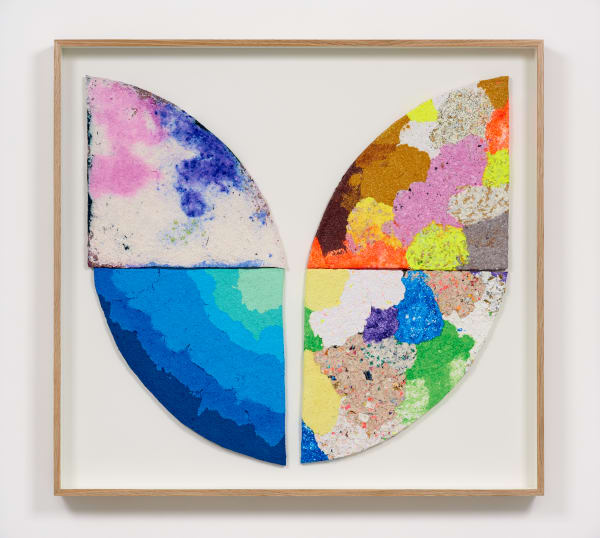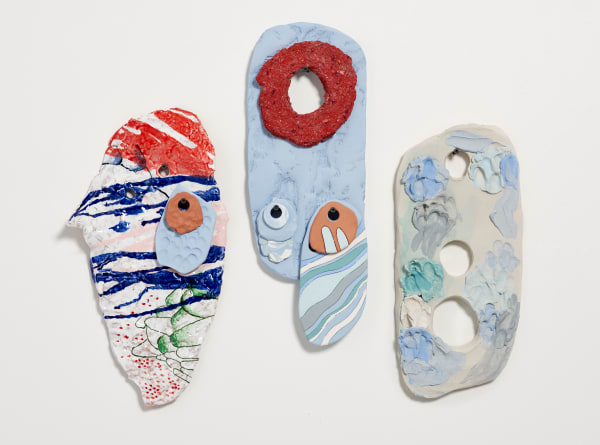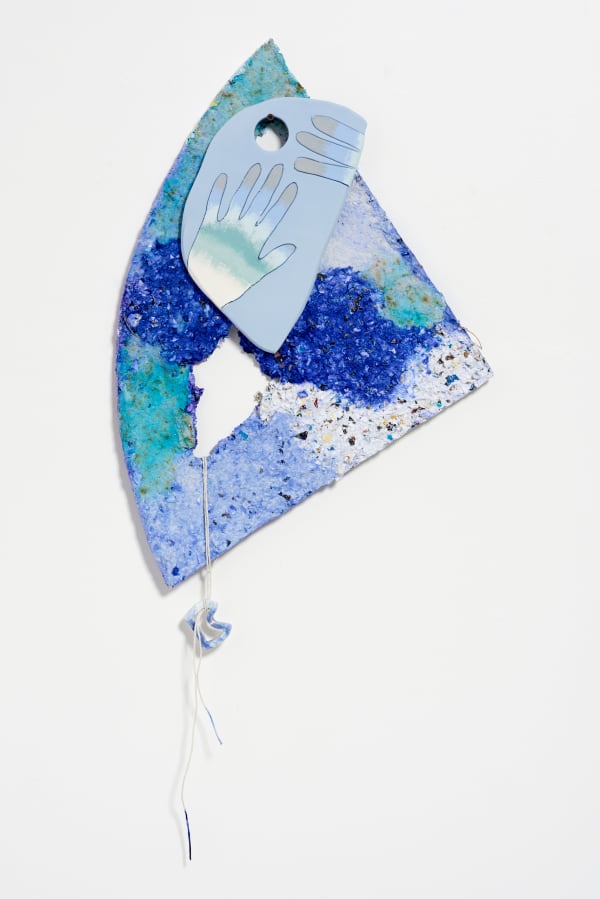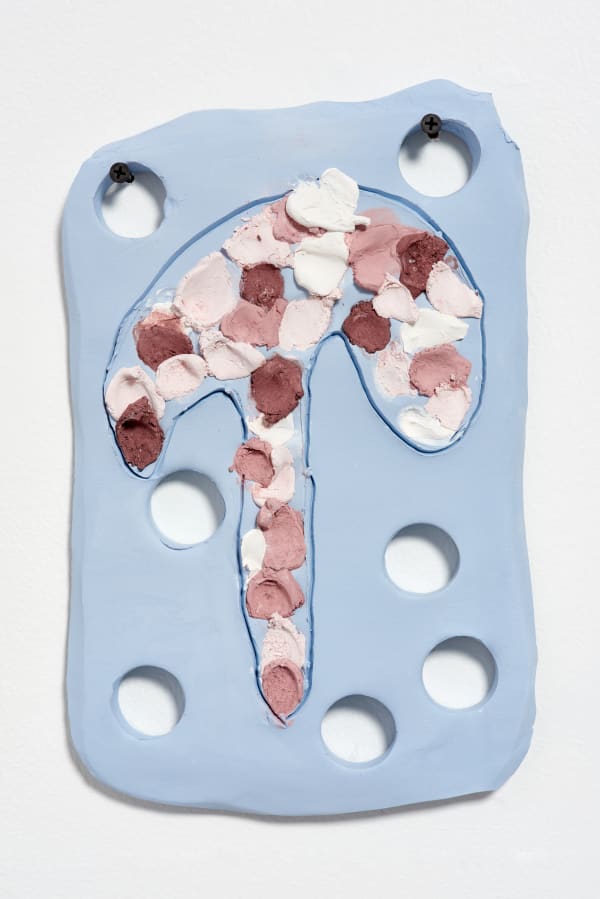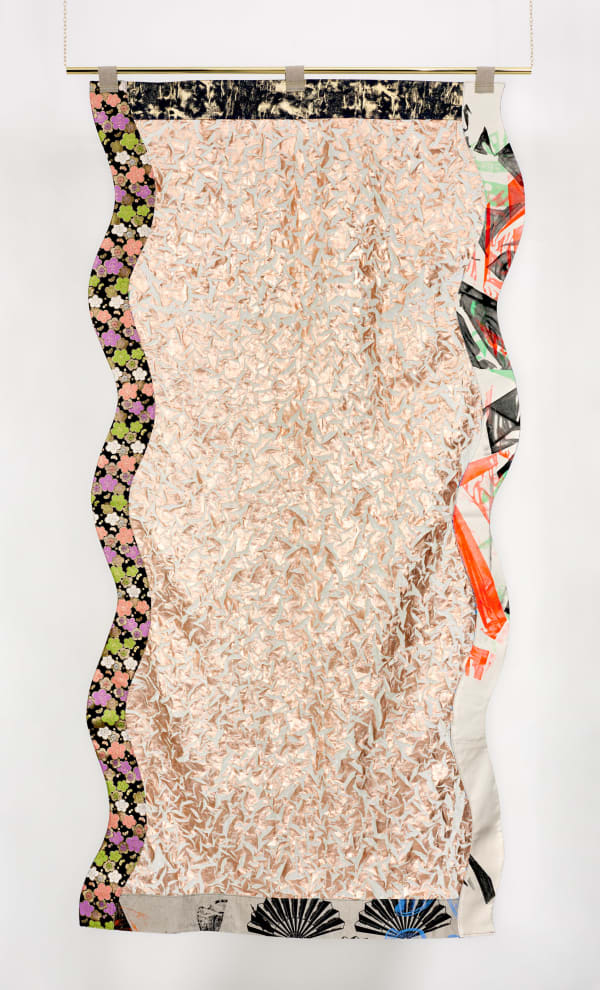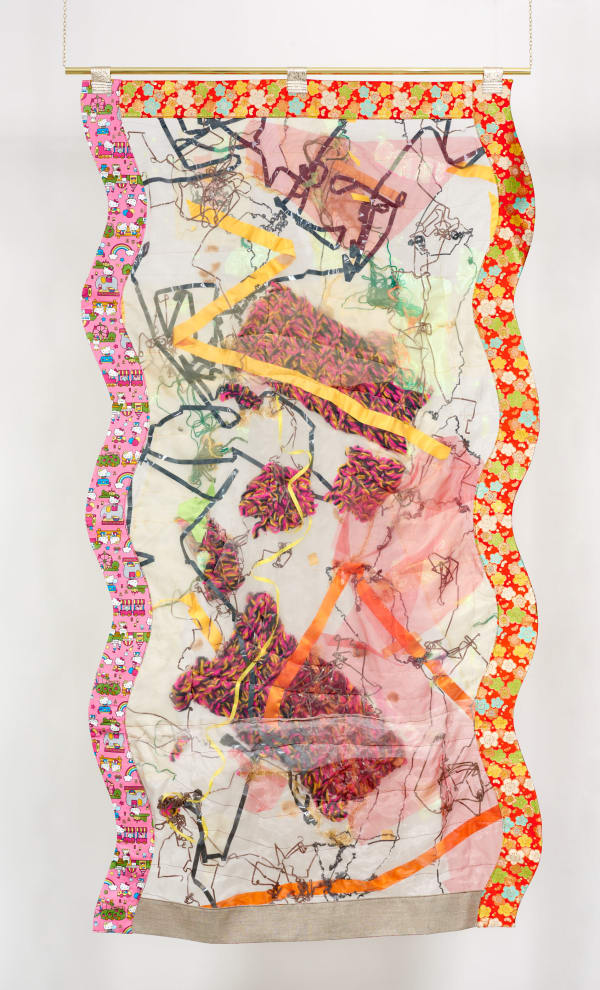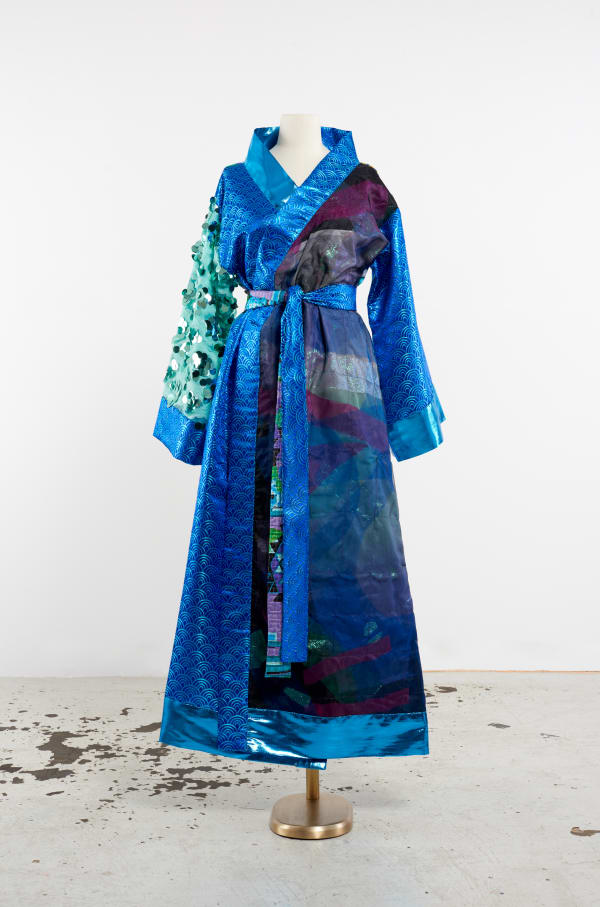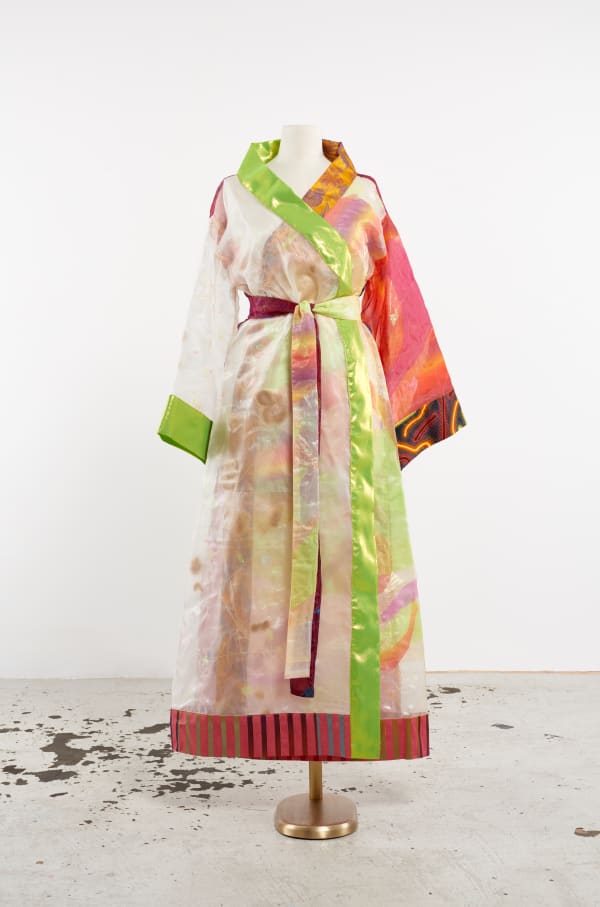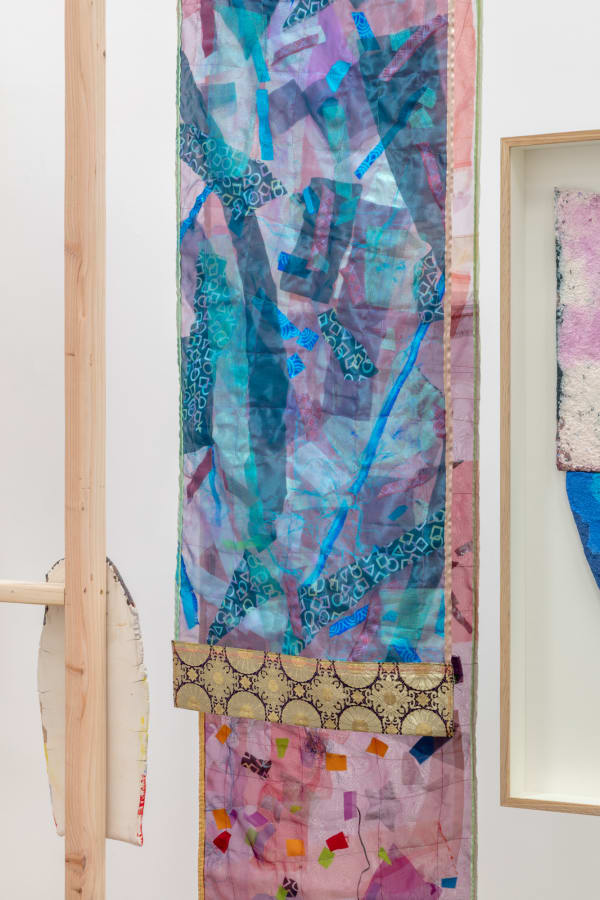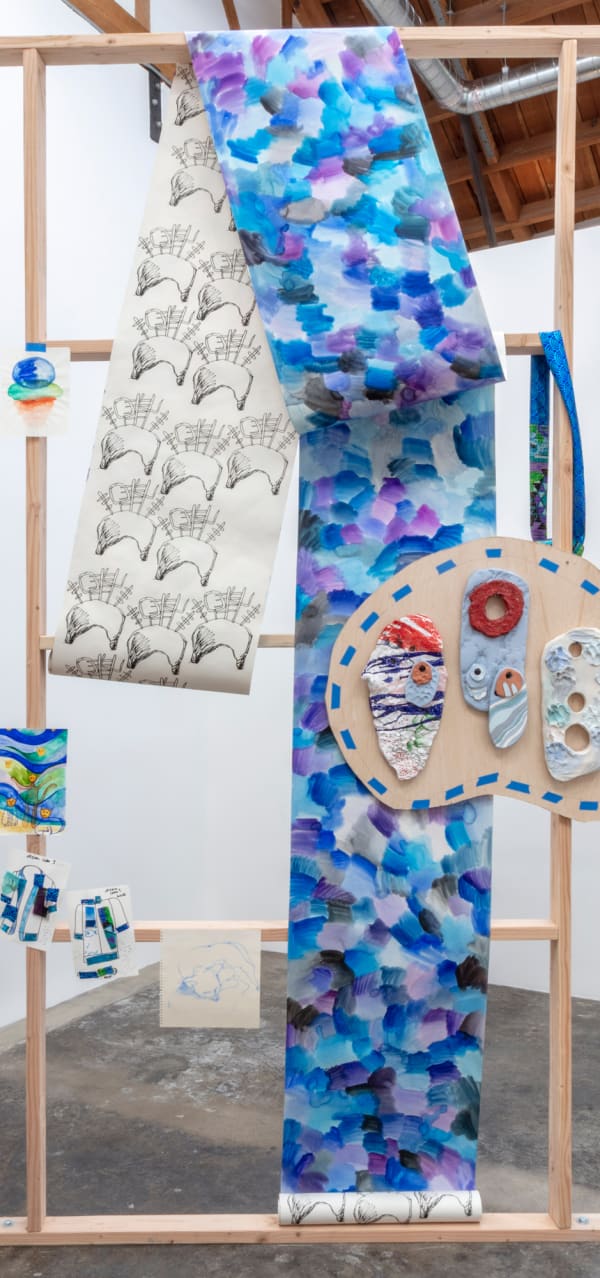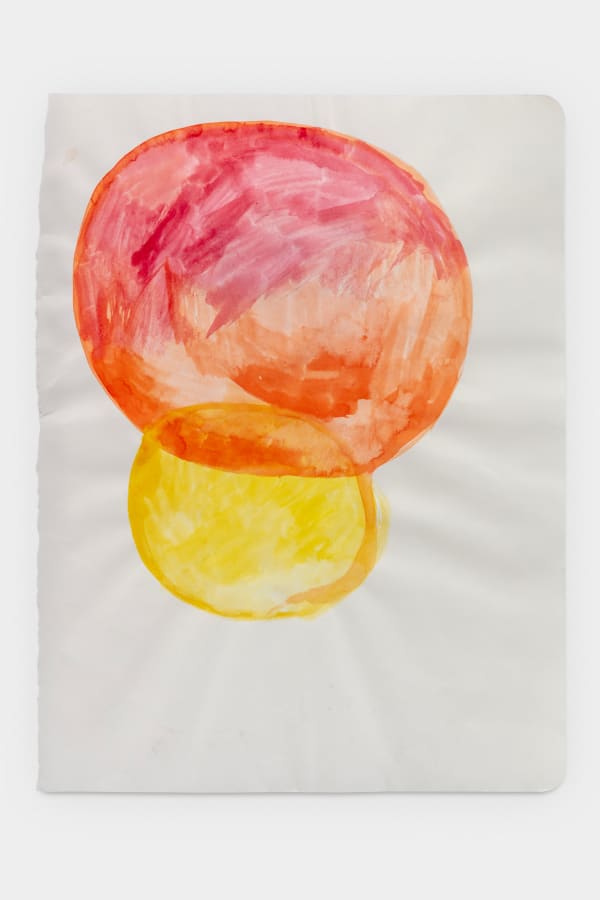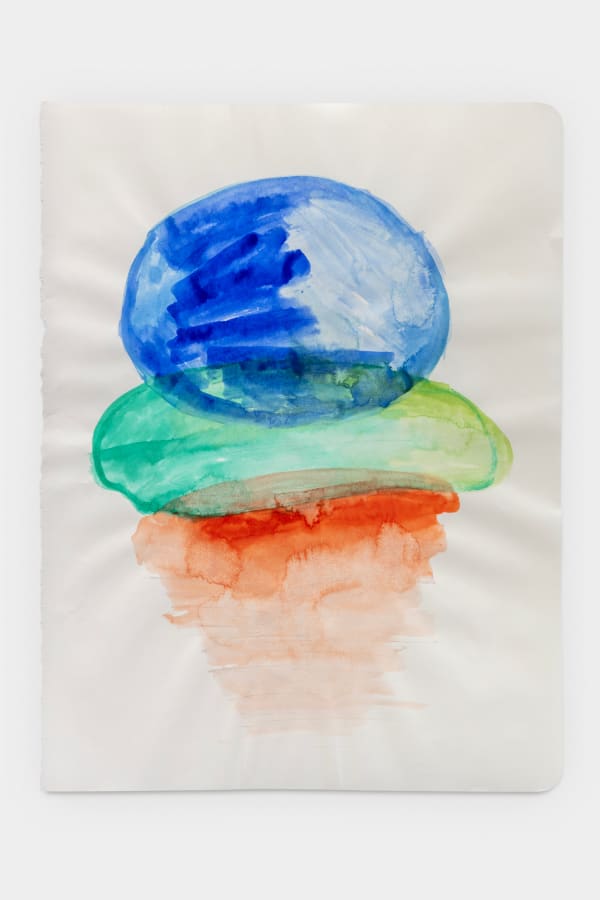-
LUDOVICA GIOSCIA
ARTURO AND THE VERTICAL SEA -
On the occasion of her second solo show in Los Angeles at Baert Gallery, Ludovica Gioscia speaks to Christian Baert about her processes and ideas within the exhibition.
The show features three large-scale wooden structures acting as looms that weave together different textures, colour palettes and materials to form ecological assemblages. These giant looms host devotional ceramic compositions resembling ex-votos, textile hangings acting as portals to interspecies tenderness, talismanic robes, double-sided hand painted wallpapers and watercolours recording telepathic exchanges.
-
For your second solo exhibition at Baert Gallery you have produced new papier-mâché works. Could you tell us more about the materials and techniques that you have used in making them?
Both the papier-mâché and the ceramics in the show are a form of ex-voto, a tribute to the non-human beings that surround me. The papier-mâché works are also a diary of the textures of our shared daily life. Pulp (be it of paper, textile or other materials) has inherent alchemical qualities. Most materials can be pulped and regurgitated into completely new shapes and augmented textures, which can transmute or inherit their original qualities. I started playing with papiermâché in 2018. It was a natural progression in my long-standing love affair with paper. I began to screen-print wallpaper in 2003, which subsequently collapsed into my wallpaper sculptures in 2006. A few years later, this crystallised into the Debrock series (compressed layered paper shaped into geological formations). The next evolution was to turn paper into a building material and I began pulping debris from my previous wallpaper installations, adding other ingredients into the mix.
These added ingredients have become extremely important during the last year. For example, for my recent solo show The Tenderness Of Insects at VITRINE in Basel – a show in which I collaborated with an oak tree - the pulps included ingredients such as distilled affection, Bach flowers and leaves from the Generous Oak. The distilled ingredients are emotional condensations of experience, that are refined through techniques borrowed from Vibrational Medicine - the vibrations and relative properties are extracted from plants and minerals and then preserved in distilled water.
For my second solo show at Baert gallery I have asked my cat Arturo to collaborate with me, and the new papier-mâché works are infused with his love, tenderness and joy. Distillations of purring, of the incredible excitement he emanates when we play together with scrunched-up tissue paper, or the deep pleasure that Arturo feels during our combing sessions are all emotions that have been captured and preserved in the new pulps. The papier-mâché live as ecological assemblages on live edge wooden shelves. These shelves are the result of a collaboration with one of my studio neighbours, designer Mark Thrugood. The wood that we used is special - it comes from Kew Gardens in southwest London, home to the largest and most diverse botanical and mycological collection in the world. The wood was very generously donated to me by the designer Sebastian Cox, also a studio neighbour.
The layered compositions have titles such as Mapping Emotions, Gift For Arturo, Autumn Harvest and Making Kin. The latter is a homage to Staying with the Trouble. Making Kin in the Chthulucene, the latest book by multispecies feminist theorist Donna J. Haraway. In the context of climate change, Haraway offers new perspectives on how we could reconfigure our relations to the earth and all of its inhabitants. Making Kin refers to relations with other beings on the planet, be they green or with several limbs, which are not biologically family-based but which have equally important and urgent obligations and consequences. It is a multi-species call for care.
Ludovica Gioscia
-
Could you tell us about the inspiration behind Dream Robe 2 and how it connects with your cat Arturo?
In 2016 I began making wearable textile artworks as magical tools. I see the Dream Robes as catalysts that help me imagine artworks in my dreams, which I then re-create at studio. This is a process that I have borrowed from the Jungian therapy that I practiced during my adolescence. This sees dreams as tools for personal expansion and as depositaries of internal conversations that we remain unaware of during our daily lives. My therapist at the time asked me to keep a dream diary, and once I was in the habit of recording my dreams they became increasingly articulate and vivid. At a certain point I remember being able to control what I could do during those nocturnal excursions, for instance I could fly and was able to choose where to go. That is called a lucid dream.
My dreams during that period were heavily populated with artworks I would create, and that is the place and process I am reactivating with my Dream Robes.
To push that process further I tried to connect to my cat’s dream world. I lie next to him when he is asleep and gently hold his paw. My aim is to dream with him and be able to recall our collaboration once I’m awake. I’ve dreamt of him, and receive colourful firework-like images from him during the phase in which I hold his paw, but as yet I haven’t been able to share an oneiric experience with him.
Dream Robe 2 is made specifically as a talisman to help bridge our dreams. It is made from translucent fabric assemblages, in which I have embedded Arturo’s hair, scrap threads and fragments of previous works. The latter are loosely arranged in patterns that are evocative of vascular systems.
LG
-
The complexity of Dream Robe 2' s assemblage is also present in Portal 23. Can you expand on materials used to create the works in the Portal series and the significance of the wavy silhouette used in each Portal?
The Portal series was born in 2017 as a key part of the modus operandi I had adopted the year earlier – the Infinite Present. The latter is a reflection on how the digital revolution has shaped our sense of time and space – it is infinitely expanding and endlessly layering information in the same space (the Internet) in a non-linear way. Since then my studio has become a magical portal in which works from other dimensions appear, and the Portals symbolise that transition. The wavy design of the textile hangings is inspired by Memphis founder Italian designer Ettore Sottsass' Ultrafragola mirrors and by vintage sci-fi depictions of portals, through which other dimensions are accessed.
Portal 23 includes Arturo’s hair. I brush him every evening - it is a routine that takes place on his ottoman around 11 pm. The textile assemblage also incorporates old magnetic cassette and VHS tape, and fragments of a woollen scarf I knitted in 2007 that Arturo used to sleep on.
The vintage magnetic tape is a recurring material in my works and has come to represent inter- dimensional communication. It stems from very personal memories, as my mother used to hold séances and record them on tape.
LG
-

-

-
List of works
-











